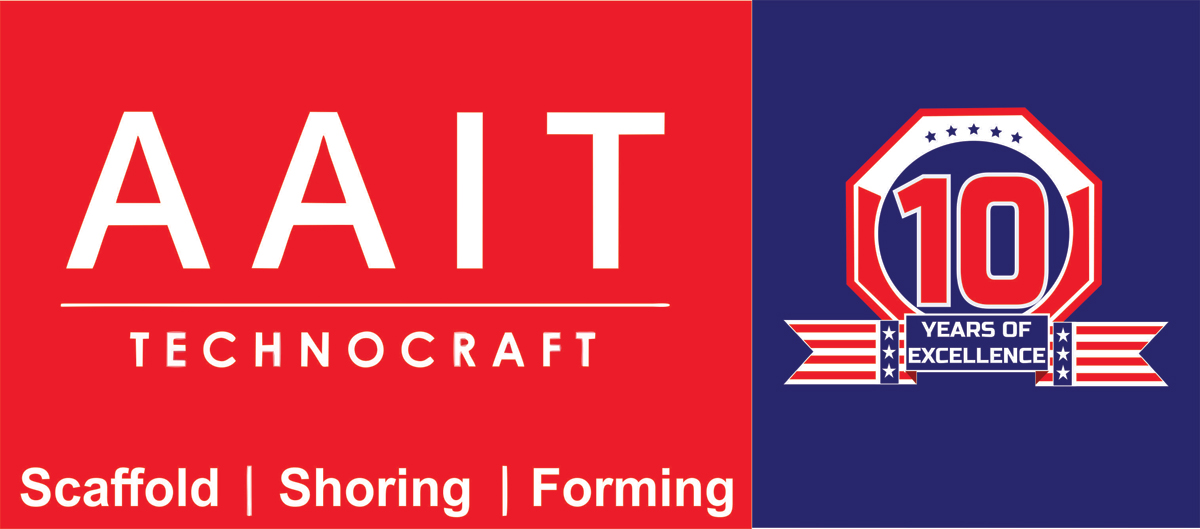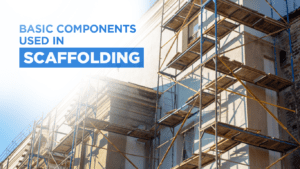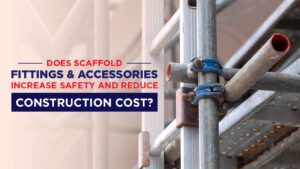What is the importance of scaffolding in construction?
System Scaffolding is a temporary structure that assists scaffolders in construction work and is used in almost all building projects. But still, there are several building projects that do not utilize scaffolding and risk their safety.
The statistics by OSHA suggest that only 65% of the construction industry uses scaffolds frequently. This boils down to ignorance of safety and productivity by not using system scaffolding.
It’s important to note that the scaffolding accessories are not only used for erecting a huge framework but are also used to boost the safety of scaffold users. Hence, this article specifically mentions when and why system scaffolding can be used.
Where can system scaffolding be used?
1. Construction work
Systems scaffolding is likely the most popular type of scaffolding in the world, and there are countless manufacturers, each with their own unique efficiencies. Some perform well under extremely heavy loads, while others are better suited for smaller, repeated scaffolding structures.
During the initial phases of a building’s construction, a large steel scaffold is required. Multiple areas of the house can be worked on simultaneously to expedite the project’s completion. Additionally, it is safer for workers working at heights.
Even after the initial foundation and support have been constructed, scaffolding is required for the final touches. The workers have easy access to the roof in the event of any problems.
2. Demolition work
Demolition work is a difficult task that entails numerous construction-related dangers. Controlling and minimizing the risks posed to the safety and protection of your demolition crew requires extensive planning.
To ensure safety during demolition work, the system scaffolding must be durable or specialized to include the following components:
- A heavy load of materials that will accumulate on the platform after being dislodged.
- The wind force will act on the scaffold.
- On the containment sheet, water accumulated.
- The aggregate weight of all workers on the platform at any given time.
3. Renovation work
Consider purchasing mobile scaffolding if you are planning extensive home renovations. You may be planning to add new rooms to your home, and the work can be completed even more quickly. It will help you remove exterior walls with greater precision and order.
When walls are removed in an orderly manner, accidental damage to the rest of the house is minimized. It will also aid in the preservation of the renovation materials. While constructing new structures, you will enjoy all the advantages of construction platforms, and builders will have easy access.
4. Roofing work
While working on your roof, system scaffolding can provide numerous advantages. Although the benefit of having a roof platform is less significant, it is safer for your roofers. Also, it will be simple to transport the necessary materials to the roof once the structure is in place.
Scaffolding provides electricians with the necessary space and access, particularly when installing solar panels.
Why is scaffolding important in construction?
The installation of scaffolding occurs at the outset of any construction or maintenance project. It is a temporary platform that provides support, and elevation, and allows construction workers to carry materials and conduct their work, including but not limited to repairs and cleaning.
Here’s the importance of scaffolding in construction.
1. Increases efficiency
Scaffolding systems provide a safe platform for builders and workers. Scaffolding improves construction efficiency by being easy to move around any building. With scaffolding structures only taking a day to erect, it’s clear how they reduce time on-site, and when time is of the essence, it’s clear why scaffolding is important during construction.
2. Enhances safety
Working at heights always has risks. Scaffolding platforms allow scaffolders to work safely at height. Not only does scaffolding protect workers’ health, but barrier netting and fencing also protect the public below. These barriers catch debris and create a safe working environment for everyone.
3. Easy to access
In order to construct and build in a more inventive manner, scaffolding provides builders and workers with access to difficult-to-reach areas of buildings. With custom scaffolding, platforms can be constructed such that no design or blueprint is beyond the workers’ ability.
4. Prime position for workers
Scaffolding puts builders and workers in a strategic position to work. Scaffolding allows them to avoid using unstable ladders. Ladders mean the worker or builder is working at an angle with no solid platform and poor balance. A scaffolding system puts workers in front of the building, so they can easily work on the wall or ceiling. Multiple workers can work side-by-side, which isn’t possible with a ladder.
AAIT is the Best Scaffold Distributor in the USA
Scaffolding is an essential part of construction. It allows builders to safely erect high-rise buildings and make repairs and maintenance. Scaffolding speeds up construction while ensuring worker and public safety. So, hire a reputable scaffolding contractor.
AAIT is a leading scaffold company in Houston that provides robust scaffolding equipment. To enhance the safety and productivity of the construction system, we deliver scaffolding accessories that meet OSHA guidelines.If you are searching for scaffold distributors in the USA, AAIT should be your ideal choice.












 Download
Download


